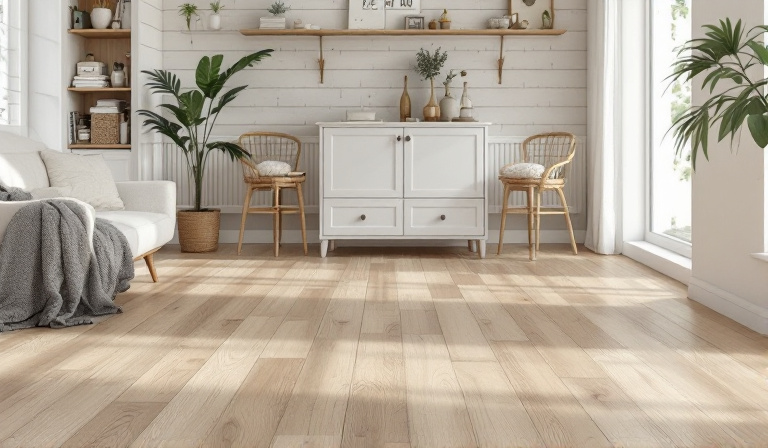
Choosing the right flooring for your home can feel like a daunting task, especially if you're new to home improvement. With so many options available, it's easy to get overwhelmed. However, by breaking down the choices and considering your specific needs, you can find the perfect flooring that combines style, durability, and affordability.
Before diving into the types of flooring, consider your lifestyle and the function of each room. Are you looking for something durable for high-traffic areas, or a more luxurious option for a quiet bedroom? Families with children or pets might prioritize durability and stain resistance, while aesthetics might be the main concern for a formal living room.
Let's explore some popular flooring options, each with its own set of advantages and considerations.
Hardwood flooring is a classic choice that adds warmth and elegance to any home. It is durable, can be refinished multiple times, and increases home value. However, it can be susceptible to scratches and water damage, making it less ideal for bathrooms or kitchens unless properly sealed.
Laminate is a versatile and budget-friendly alternative to hardwood. It's designed to mimic the appearance of wood or stone and is resistant to scratches, making it suitable for high-traffic areas. However, laminate can be damaged by moisture, so it's not the best choice for bathrooms.
Vinyl flooring is a durable and water-resistant option, perfect for kitchens and bathrooms. It's available in a variety of styles, including planks, tiles, and sheets. Vinyl is softer underfoot compared to hardwood or tile, providing a comfortable surface for standing or walking.
Tiles are a popular choice for bathrooms and kitchens due to their water resistance and easy maintenance. They come in a wide range of colors and designs, allowing for creative and personalized installations. Keep in mind that tiles can be cold and hard, so adding an area rug or underfloor heating might be necessary for comfort.
Carpet provides a soft, warm surface, making it a cozy option for bedrooms and living areas. It offers sound insulation and is available in numerous colors and textures. On the downside, carpets can stain easily and require regular cleaning, especially in homes with pets or children.
When choosing flooring, tailor your choice to each room's specific needs and conditions:
Budget is a crucial factor in your flooring decision. Hardwood and tile tend to be more expensive, while laminate and vinyl offer cost-effective alternatives. Consider the installation process as well. Some options, like carpet or tile, may require professional installation, while others, like laminate or vinyl, can be DIY projects.
For environmentally conscious homeowners, consider the sustainability of your flooring choice. Bamboo and cork are eco-friendly options, as they are renewable resources. Additionally, look for flooring with low VOC (volatile organic compounds) emissions to maintain indoor air quality.
Ultimately, the perfect flooring for your home should reflect your personal style, meet your practical needs, and fit your budget. Take your time to research and even sample different materials. Visiting showrooms or requesting samples can give you a better sense of how each type will look and feel in your space.
By considering these factors, you'll be well on your way to selecting flooring that enhances the beauty and functionality of your home. Happy renovating!
Here you can find articles from our knowledge base.